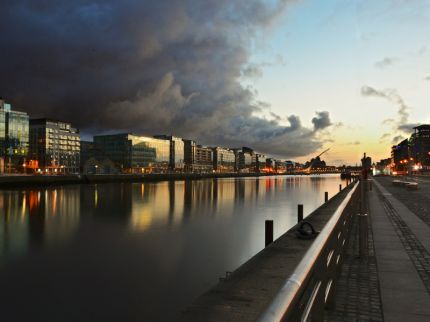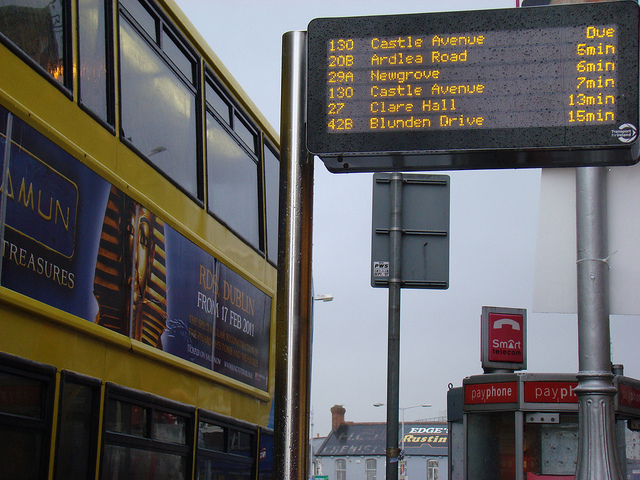
With the world’s population increasingly drawn to live in cities, officials and citizens must imagine a more urban future. It is estimated that seventy percent of the world’s population will live in cities by 2050. This trend is driving the need to implement technologies that enable cities to predict rather than react to the future’s soaring demands.
Big Data, IoT, and Sensors
To ensure the future wellbeing of citizens, cities around the world are looking to big data and technologies in the Internet of Things (IoT) to help solve potential problems. It is predicted that city governments around the world will invest $41 trillion during the course of the next twenty-five years to upgrade infrastructure systems, enabling them to benefit from the Internet of Things.So how can data gathering improve the way a city is run? Monitoring real time data gathered via sensors can enable the intelligence and flexibility needed to more efficiently use resources and energy as well as to improve the quality of air and water, transportation, and communication systems. By tracking the way citizens behave (foot and vehicle traffic, energy consumption, etc.) as well as the city environment (weather patterns, pollution, etc.), officials can make informed decisions about future infrastructure and city improvements. Additionally, real-time data reporting can enable instant decision-making about things such as rerouting traffic around an accident.
Dublin – an exemplary “Sensor-City”
Dublin, the capital of Ireland and home to over 1.2 million people, is set to become the first fully sensored global city in 2015 after recently implementing Intel’s Irish-developed Quark Technology. The pilot project involves installing more than 200 sensing gateways across the city that gather real-time data about air quality, noise levels, and traffic movements in an effort to improve the city’s environmental management and citizens’ quality of life. The sensors are set to be installed on lamp posts, drains, public buildings and other facilities and will feed information back to computers, tablets, and smartphones operated by the Dublin City Council. Things such as breaches in noise levels, high pollution, flood alerts, and other measurements of the environment will instantly alert city officials who will be able to respond to emergencies more quickly. The data will also be made openly available to the public in order to support decision-making and develop a community of co-innovators drawn from national and local stakeholders.
Data-Driven Traffic Management – Don’t react- predict!
 Dublin has already implemented programs that contribute to a more efficiently driven infrastructure system. The city’s road and traffic department collaborated with IBM to combine real-time data streaming with traffic information from road sensors, video cameras, and GPS updates from the city’s 1,000 buses. Dublin’s traffic controllers use the data to overlay real-time locations of the city’s buses, locate areas experiencing delays, and identify the source of the problem before it spreads to other routes.The system allows controllers to influence the outcomes in real time rather than getting information after it’s too late; the value of 15-minute-old traffic information is not relevant for anything other than analyzing what caused delays. This may also facilitate traffic planning on a long-term basis, such as where to add additional bus lanes or whether bus start times should be changed. For example, traffic controllers found that buses with a later departure times during rush hour actually passed some buses that left earlier. Dublin also brings meteorological data into the system to enable operators to better control the influence of extreme weather conditions on commuters.As seen with this collaboration between the Dublin City Council and local transit providers, one of the best ways for sensor data to work for the benefit of all is for there to be collaboration between the public and private sectors.
Dublin has already implemented programs that contribute to a more efficiently driven infrastructure system. The city’s road and traffic department collaborated with IBM to combine real-time data streaming with traffic information from road sensors, video cameras, and GPS updates from the city’s 1,000 buses. Dublin’s traffic controllers use the data to overlay real-time locations of the city’s buses, locate areas experiencing delays, and identify the source of the problem before it spreads to other routes.The system allows controllers to influence the outcomes in real time rather than getting information after it’s too late; the value of 15-minute-old traffic information is not relevant for anything other than analyzing what caused delays. This may also facilitate traffic planning on a long-term basis, such as where to add additional bus lanes or whether bus start times should be changed. For example, traffic controllers found that buses with a later departure times during rush hour actually passed some buses that left earlier. Dublin also brings meteorological data into the system to enable operators to better control the influence of extreme weather conditions on commuters.As seen with this collaboration between the Dublin City Council and local transit providers, one of the best ways for sensor data to work for the benefit of all is for there to be collaboration between the public and private sectors.
Citizens and Sensors
There are long-term plans to develop apps that provide people with information on air quality and noise levels around Dublin so that when they travel during the day they will have the ability to locate the most environmentally friendly routes. Citizens can enable their smartphones to be used as sensors in order to provide further real-time information as to how people are moving around the city. The city is currently testing an application called Citywatch which overlays the sensors, while also allowing people to submit reports on environmental issues such as uploading photos of areas that require attention. Part of the project’s goal is to be able to provide better cycling paths, more trees, and to make traffic adjustments to reduce areas where air quality is poor or noise levels are high. In fact, a recent study proves the potential detrimental effects city noise can have on public health and how urban planning can help limit the noise pollution.
NYC – Keeping Up with International Cities
As one of the most densely populated cities in the world, New York City (forecasted to have 9.1 million residents by 2030) must also endorse a variety of strategies to become smarter and upgrade its aging infrastructure. Dublin might be the city for NYC to keep its eyes on.New York has embraced open data and has more than 2,400 databases open to the public (more than twice their nearest competitor in this ranking), but the city lags in implementing and upgrading systems that can collect, interconnect, and use data to improve public services on a widespread level.Recent development project Hudson Yards is a step in the right direction. The project developers of the 28-acre complex have collaborated with New York University on a smart-city project aimed to measure the way New Yorkers interact with their urban environment; hoping that the big data collected will help it run more efficiently and make it a better place to work and live. Information about pedestrian traffic, air quality, energy production and consumption as well as health and activity levels of workers and residents will be collected through thousands of sensors installed throughout the complex. The data gathering is part of the many initiatives the project is undergoing to function as a model for cities across the globe.

